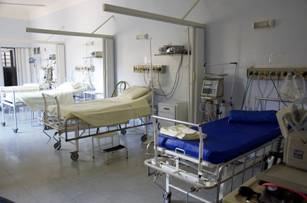Archives
Smoking Linked to Increased Risk of Aneurysm Recurrence after Endovascular Treatment
According to a University of Michigan study, individuals who have a history of smoking and undergo endovascular aneurysm treatment are more likely to experience the recurrence of a brain aneurysm.
"There was an almost threefold increase of aneurysm recurrence for smokers," says senior author B. Gregory Thompson, M.D., a neurosurgeon at Michigan Medicine. "We must make a much more profound attempt to convince patients they have to stop smoking."
 The study published in the Journal of Neurosurgery, analyzed 247 patients who experienced 296 cerebral aneurysms. Researchers separated individuals into three groups: current smokers, former smokers and those who had never smoked. Those who were former and current smokers had “a recurrence rate of 26.3 percent, and accounted for 232 of the 296 aneurysms documented in this study.” Those who had never smoked “experienced a recurrence rate of 17.2 percent, accounting for the remaining 64 aneurysms.”
The study published in the Journal of Neurosurgery, analyzed 247 patients who experienced 296 cerebral aneurysms. Researchers separated individuals into three groups: current smokers, former smokers and those who had never smoked. Those who were former and current smokers had “a recurrence rate of 26.3 percent, and accounted for 232 of the 296 aneurysms documented in this study.” Those who had never smoked “experienced a recurrence rate of 17.2 percent, accounting for the remaining 64 aneurysms.”
"We already know that smoking increases the development, growth and risk of rupture of aneurysms," says Thompson, the John E. McGillicuddy Collegiate Professor of Neurosurgery. "We didn't know that after endovascular treatment the risk of recurrence of an aneurysm is as clearly related to smoking as we've shown in this study.”
Researchers are still unsure of why exactly tobacco utilization results in an initial aneurysm, but there are various suggestions. University of Michigan researchers in particular theorize that smoking might impact how “an aneurysm is obliterated in the first place”, or may prevent or slow the healing process.
All patients participating this study had received endovascular treatment, an increasingly common option despite its lack of durability compared to that of traditional surgery. The study also revealed that former smokers, who had reported smoking cessation at any time, had a 23.8 percent rate of recurrence. Current smokers had rate of 28.4 percent of recurrence, while individuals who had never smoked were only found to have a recurrence rate of 17.2 percent.




